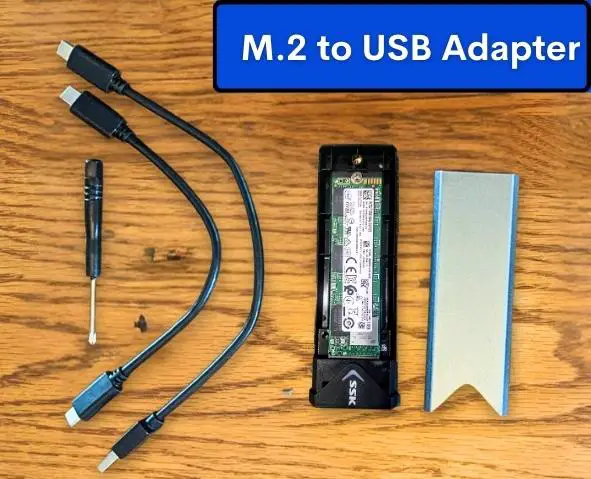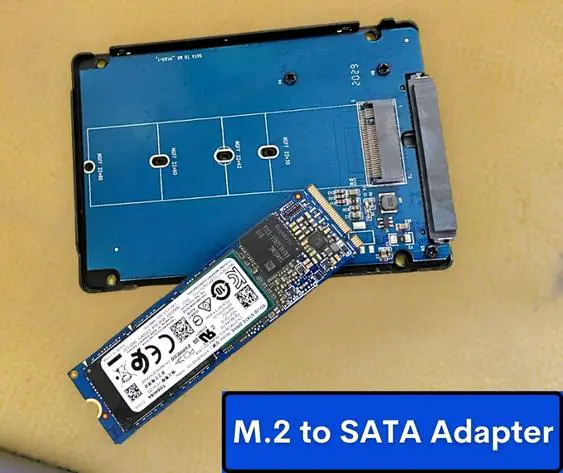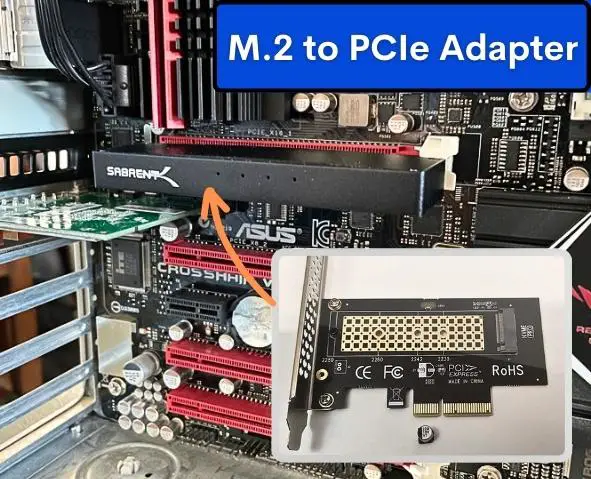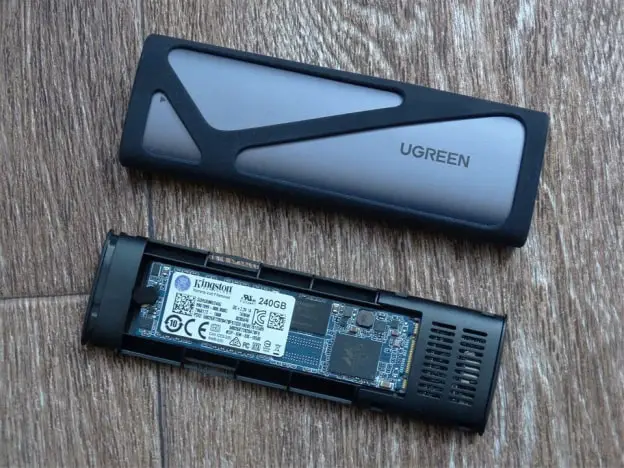Can you connect a M.2 SSD to a Regular SATA or USB port?
Is it possible to use an M.2 SSD drive with a regular SATA cable/interface or USB port? Well, this dilemma occurs when an existing laptop breaks or a desktop’s motherboard needs to change, and you find out this new one doesn’t have an M.2 slot, worrying out the number of documents & files saved on the old M.2 SSD.
In general, most modern laptops and motherboards have the M.2 slot. Still, in older & inexpensive computers, it simply does not exist, and to get out of the situation described above, you can resort to the following options…
M.2 SSD to SATA Cable, USB Port & PCIe Card
Option 1 – Copying into a Secondary PC/Laptop with an M.2 slot (No Cost)
One of the easiest and fastest options is to contact your friend/acquaintance who has a modern laptop / PC with an M.2 slot. Securely insert an M.2 drive to recognize the new M.2 SSD when you power it on.
After that, you can quickly copy everything to another medium (for example, a flash drive) and then transfer the data to your new laptop/PC and directly using USB cables to transfer from PC to PC on the spot. This way, you can avoid having to purchase any additional equipment or adapters.
Option 2 – Using an M.2 to USB Adapter
If you do not have another PC or laptop available with an M.2 slot, the next suitable option would be an M.2 SSD to USB adapter that will allow you to connect your M.2 drive via a USB port.
The M.2 SSD to USB Adapter looks like a ‘large‘ flash drive, inside of which there is a compact board with an M.2 connecting slot (see photo below).

These adapters are relatively inexpensive and can be found in many computer stores or online marketplaces.
As for use, after fitting the M.2 drive with screws inside the adapter, working with it becomes extremely simple: connect it to the other end of the cable into the USB connector, preferably version 3.0 or higher, and Windows will automatically recognize it.
An important point: “such adapters” can be for both SATA M.2 drives and PCI-E NVMe. Of course, before ordering, you need to know which one is compatible with the type of M.2 drive you have, whether it’s SATA or NVMe. Some adapters support both (talked later ahead), while others might be specific to one type.
Option 3 – Using an M.2 to SATA Adapter
Adapters are not only available for connecting to USB ports but also for SATA, i.e., by installing an M.2 drive in such an adapter. Yes, instead of connecting via USB, it connects through SATA ports on your motherboard.
Here, you have to fit your M.2 drive into this compact board that comes with a SATA 3 interface. This option is more suitable for those who already have available SATA ports on the motherboard.

While the M.2 to USB adapter can serve as a portable external drive, the M.2 to SATA adapter is meant to be installed inside your computer case and used as a permanent drive.
The only point is that not all computers have a secure way or space, especially in the case of a laptop, to hold the M.2 to SATA adapter with the M.2 drive. Here, you can get creative to improvise by, for example, bending or modifying a component or cable ties within the case to ensure the adapter and M.2 drive stay in place securely.
But aware, these steps not only voids warranty but can damage the device.
Option 4 – M.2 to PCI-E adapter for desktop motherboards
Not all motherboards have a dedicated slot for M.2 drives. If your motherboard is one of those, you can still connect an M.2 drive using an M.2 PCIe adapter card. There are likely to have unused PCI Express slots on the motherboard, such as PCIe x4, that can be used to connect the M.2 to PCI-E adapter.

This method uses PCI-Express lanes to transfer data between the M.2 drive and other components of your computer, making it faster than using SATA or USB connections.
Like previous adapters, M.2 PCI-E adapter has screws to fit M.2 SSD drive on it and then install it on any of the free PCIe slots; the higher version, the better.
One important thing to note is that connecting an M.2 drive through PCIe will use up some of your motherboard’s PCIe lanes, potentially affecting the performance of other components, such as graphics cards or network cards.
Important Points to Remember:
- Adapters, as mentioned above, can be for different drives: PCI-E NVMe and SATA M.2. Before buying an adapter, you need to know which drive it will be used for.
- While the M.2 drive is known for faster speeds compared to traditional HDDs or even SATA SSDs, if you connect a drive through any of the adapters, its operating speed will be limited by the speed of the adapter itself.
- Ensure there’s enough physical space inside your laptop case to accommodate the M.2-to-SATA adapter and drive. Be mindful of any protruding components or cables that might interfere with the installation.
- Depending on the design of the M.2-to-SATA adapter, heat dissipation might be a concern. M.2 drives tend to generate heat during operation. Ensure that there’s adequate airflow and cooling in the area where the adapter is installed to prevent overheating as it may not possible to use M.2 heatsink in such cases.
- It is recommended that the PCIe adapter be placed higher or through one socket lower from the GPU card so that the heat output from the GPU does not affect the M.2 SSD.
- You might need to change the boot order in BIOS/UEFI settings if you want to use the M.2 drive adapter as your main C drive along with other drives.
- Remember that disassembling a PC/laptop may be a reason for refusing warranty service!
Final Words
So above mentioned are ways you can connect SSD M.2, even if you do not have a particular M.2 slot for the connection. The only detail requiring attention is the location of the device so that it does not interfere and the connection is not accidentally interrupted.
General recommendation: be careful when choosing adapters because even if you can work with all SSD sizes, not all keys are suitable for all connectors. In the adapter specification, pay attention to which type of key is supported. It can be « mSata », « B Key », or « M Key », and warnings on the pages of adapters can be as follows:
For instance, I have a Ugreen M.2 – one of the most popular enclosures for M.2 SSD in its most advanced modification of Dual Protocol.

The case meets most of the criteria described above. It supports M-key and B-key, which means it is compatible with both SATA and NVMe SSD, provides a speed of up to 10 Gb/s and can be used with consumer SSD of any size.
The case comes with two USB 3.1 Gen 2 cables, one of which has a Type-C connector and can be used not only to connect to laptops and modern PCs but also smartphones (subject to OTG support).
